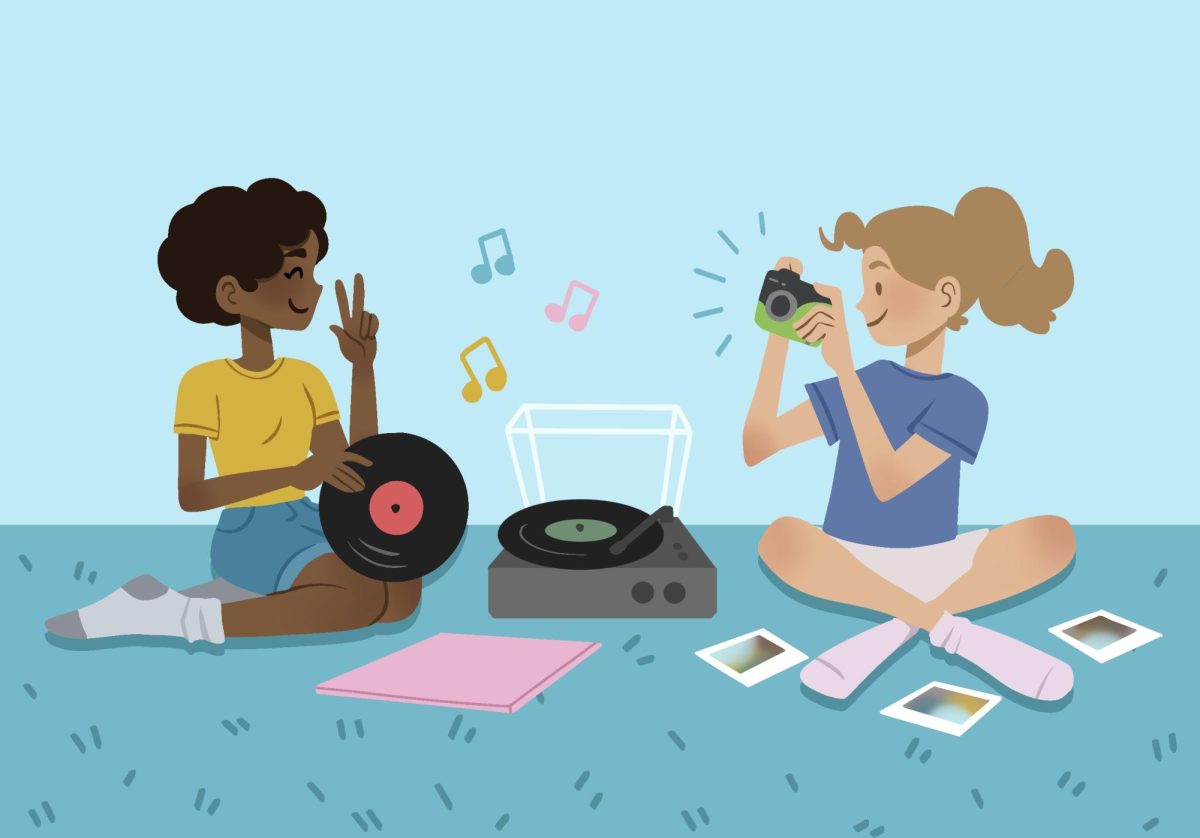When I sit down to check my e-mail, I typically rifle through and delete all excessive forwards from my family – “heartwarming” anecdotes or photos of animals with some kind of “witty” punch line. I can’t look very long at fuzzy kittens without wanting to puke (regardless of my allergy to the animal). But, after a thorough cleaning of the clutter, business includes notices of office hour changes and reminders from my various departments to “drop in for fall advising.”
The other day, however, one particular forward from my Georgian aunt caught my eye. Ridiculous as I felt, I found myself pleasantly surprised after clicking the link. The viewfinder that opened in the screen of my Apple lent a piece of Dove’s Campaign for Real Beauty. The clip, “evolution,” lends the viewer insight into the process of becoming glamorous for billboards and photo shoots. An already beautiful woman walks into a studio, and as she sits upon a stool, a switch is flipped and lights illuminate her face. From here the film is taken into double time as airbrush artists apply foundation, her eyes and eyebrows are enhanced with heavy makeup, her hair is styled, ratted and blown out by a fan and so on and so forth. After photographs are shot, she is then digitally altered: her lips enlarged, shoulders softened, neck heightened, eyes moved slightly lower on her face, neck is slimmed and hair smoothed further. We finally see her on a billboard for a foundation that covers her nonexistent blemishes.
This billboard then becomes one of the 1,000-3,000 advertising messages Americans see daily.
The question of a woman’s body image as related to advertising is not new news. We all know that Barbie’s supposed 5-foot-six-inches, 110 pound stature could not physically support her would be 39 inch bust, 18 inch waist, 33 inch hips. But this is why she is made of plastic and we’re not. Yet we’re always told to be fixing ourselves.
A conversation with a good friend of mine Sunday night reminded me of this. We were discussing the gendered difference between stepping on the scale. He told me he merely sees a number that is sometimes higher and sometimes lower than the day previous. But we agreed that this is different for women. Shrinking numbers are rejoiced, and while a rising number doesn’t necessarily cause havoc, it is not forgotten. While
I take little issue with my own body, this reaction to the scale is blanketed for all women. We forget that our weight can fluctuate several pounds within the constraint of a day or that exercise often provides an increase in muscle and thus a gain in weight.
The truth is very few women have the body type required to be a cover girl, and as a giantess of 5-foot-two-inch, I’d be a miserable failure in the business. Yet even the women on “America’s Next Top Model” are not perfect enough. Danielle Evans won the contest last year, but only after an ultimatum was laid out. The judges of the show required her to fix the gap in her two front teeth: the part of her anatomy she had begun to love as characteristic of herself. Photographs from her modeling career now litter Google search engines; all with perfectly straight teeth. After the failed return of Britney Spears, folks were talking more about her “baby belly” than her lip-synching. While I maintain the belief no one should walk around in a bra and booty shorts, why were her curves under more scrutiny than her actual musical performance?
When Dove began this particular project in 2004, a major research endeavor interviewed women between the ages of 18-65 from 10 different countries. Their results were stunning in that only 2 percent of women would venture to call themselves beautiful. Higher numbers fell into categories where women labeled themselves attractive or pretty, but these numbers were a respective 5 and 9 percent. The majority of women (59 percent) feel that physically attractive women are more valued by men.
Thus Dove set out to provide a remedy that would only create a dent in the damages done to women by the media. Many will recall the billboard of six real women (sizes 6 to 14) in their underwear in Times Square in 2005. But this campaign has not disappeared. Currently, in Canada, there is an open casting call for a similar project. The stipulation for audition is that women must write a letter to their bodies and present this self-reflection to the casting directors. Daunting as it may seem, Dove seems to have a greater grasp than any other corporation concerning what women need to understand about themselves and to incite small changes. As Dove is the No. 1 personal wash brand worldwide, the company’s campaign remains a major provider of the image of women. Their idea now is to reach young girls before the media does. The Web site now provides message boards and a “Girls Only Interactive Self-Esteem Zone.”
But what of us the media has already reached? I know beautiful girls with pear shapes who are convinced they just have a big ass. A remedy that would rid us of media influence is impossible, but challenges like Dove’s “Dear Body” are a start. Whether they have a curved or a beanpole body, all women deserve less scrutiny and a stronger sense of self.
Kelsey Kudak welcomes comments at [email protected].







